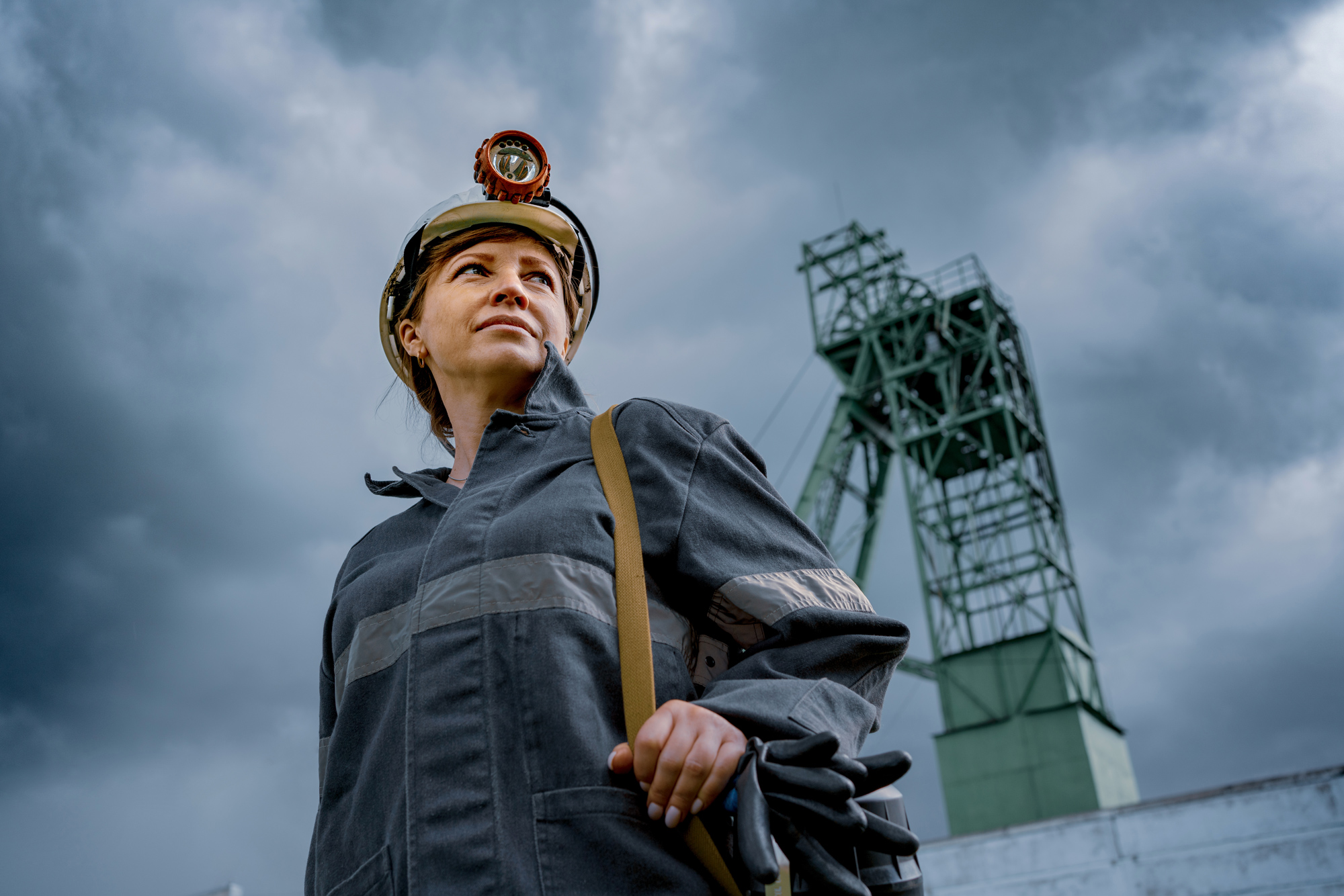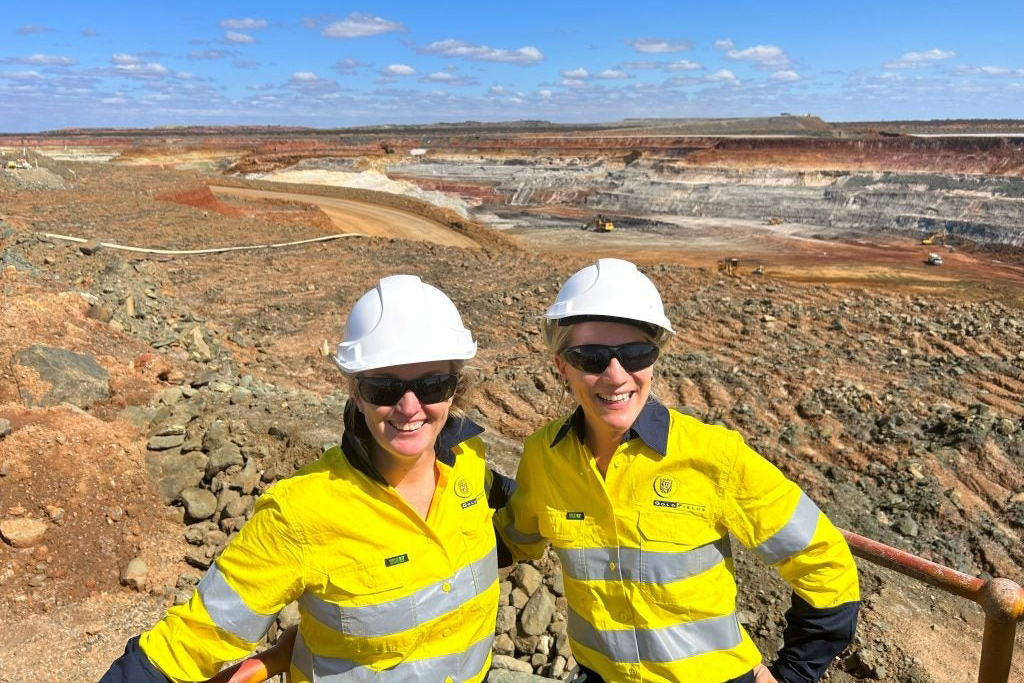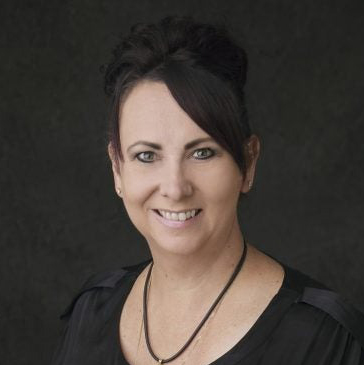Feature
How can Australia’s mining industry recruit and retain more women?
Making mining more accessible to women will improve the industry’s efficiency and innovation. Claire Jenns reports.

Women offer a relatively untapped talent pool for the mining industry. Credit: 1968 / Shutterstock
It is no secret that women are under-represented in the male-dominated minerals industry. In Australia, data from the Workplace Gender Equality Agency (WGEA) confirms that to date women comprise only 22% of mining employees.
As the highest-paying sector in Australia, 92% of mining employers have a gender pay gap (GPG), which presents a considerable barrier to attracting and retaining female employees. However, 57% of companies improved their average GPG from 2022–23 to 2023–24, demonstrating concrete progress.
Alongside rectifying GPGs, mining companies must increase female leadership roles and establish positive work environments, particularly at remote mine sites, to reap the full benefits of a gender-balanced workforce.
The business case for including more women in mining is strong at a time when varied skill sets and increased innovatory capacity are urgently needed to navigate the dynamic global commodities market.
As March marks both Women’s History Month in Australia and International Women’s Day, Mining Technology speaks to key female figures in the national mining sector to understand how gender balance can be achieved.
The gender pay divide in Australian mining
In 2023, legislation was passed requiring Australian private sector employers with 100 or more employees to publicly publish their GPGs for the first time. This revealed that mining’s average total GPG is just under 20% as of 2025.
From 2023–24, WGEA data shows that 86% of mining companies had a formal policy on equal renumeration between women and men and 91% conducted a GPG analysis. However, the percentage of employers that took action as a result of their findings dropped to 76%.
There is an additional gap in gender inclusivity, with a 2024 survey from the Australian Institute of Mining and Metallurgy showing that 24% of women rate mining’s inclusivity as ‘very good’ or ‘good’ while 36% rate it as ‘very poor’ or ‘poor’.
The mining industry isn’t alone in terms of gender divides, which begin at an educational level. From a young age women are systematically directed away from science, technology, engineering and mathematics (STEM) subjects and therefore technical careers in mining, which require knowledge of mathematics, geology, engineering, chemistry and physics. The only area in which women dominate in the industry is administration (72%), which tends to offer lower-paid roles.
Australian iron mining giant Fortescue directed Mining Technology to its 2024 sustainability report, which discloses an 8% GPG in the country, and states: “Employment areas can differ significantly in renumeration, often due to pay related to roster and site conditions.”
Barriers and opportunities for women in mining
Wendy Treasure, a specialist resources lawyer and consultant for Australian junior mining companies and government, confirms that larger miners are “making concerted efforts to open jobs up to women”.
“Getting roles is no longer as hard as it was for female geologists, hydrologists, metallurgists or engineers,” she says.
However, she identifies a significant absence of women in company ownership and entrepreneurship. According to the WGEA, only 11% of CEO or equivalent mining roles are held by women.
Indeed, non-profit organisation International Women in Mining highlights that: “The majority of those holding operational leadership or CEO positions in the top ten ASX [Australian Stock Exchange]-listed mining organisations have progressed from technical leadership, supported by tertiary qualifications in engineering, geology, geophysics or similar – areas all under-represented by women.”
Speaking to Mining Technology, Claire Walker, vice-president of external relations at Gold Fields Australia, acknowledged “the range of gendered barriers that prevent girls from studying STEM subjects… impacts the number of women entering the mining industry. This is exacerbated further in diverse cohorts who face additional cultural and economic barriers to study to tertiary level.”

(From left): Gold Fields' vice-president of external relations (Australia) Claire Walker and executive vice-president: group head of legal and compliance Kelly Carter. Credit: Gold Fields
Dani Tamati, president of the Western Australia (WA) Mining Club and founder of recruitment consultancy THE resources HUB, works to promote the industry to younger women. “I speak to schools about getting into mechanical trades and many girls don’t understand what a mine site is. Bringing a new perspective is important – what do you mean I could be an electrician or a diesel fitter?”
As more women are brought into the industry, gender-based harassment remains a dark cloud over mining.
Wendy Treasure, specialist resources lawyer
As more women are brought into the industry, gender-based harassment remains a dark cloud over mining. “This is the case even with the big and proactive companies with safety procedures and culture reviews,” says Treasure. “It is a big shock and of concern to everyone in the sector.”
It has been several years since the federal government’s Respect@Work inquiry and the WA government’s report on bullying and harassment in the state’s fly-in, fly-out (FIFO) mines, which exposed a toxic culture for female workers in the country’s largest mining state.
Even now, Treasure explains that: “WA is a very hot market with so much movement between companies and sites, which can allow harassment to continue.”
According to WGEA data, mining companies score highly on providing sexual harassment and discrimination training, confidential external counselling and anonymous disclosure processes. However, there is room for improvement in offering union or worker representative support throughout disclosure processes and trauma training for employees, witnesses and responding staff.
“There is a change in how mining companies respond,” says Treasure. “Now there is a more holistic attention to detail, looking at how groups fit together in a broader environmental and social picture, rather than just a focus on racing to approval times.”
Institutional and company support
Collaboration across Australia’s public and private sectors has been a positive force in improving the position of women in mining.
Major mining companies have established educational programmes on gender equality such as Rio Tinto, Fortescue and BHP’s Building Safe and Respectful Workplaces initiative. This is bolstered by government efforts such as the Mental Awareness, Respect and Safety (MARS) programme, which includes a free and confidential telephone support service for miners affected by harassment and discrimination.
Under the MARS programme in WA, Gold Fields’ Respect in Mining initiative is a primary prevention-based leadership training and education programme that will be rolled out in 2025 across its global operations. Walker confirms that “we are working towards creating a diversified future workforce for both our company and the broader mining industry”.
Other company initiatives include the Futures Program Bursary, which provides support for up to five years of STEM-related study for female students, and the Women in Gold Fields Operations programme, which creates opportunities for women in operational roles to advance into leadership positions. This forms part of the company’s goal for 25% of its national workforce to be female by 2025, which it has surpassed, according to the WGEA’s database.
BHP also set a 40% gender balance target for 2025 for its global operations – as of 2024 it stood at 37.1%. WGEA data shows that 56% of the company’s Australian workforce are women, though 100% of its CEO or equivalent roles are held by men.
BHP’s South Flank iron mine in Pilbara has gained prominence in the industry for its gender-balanced working model. In collaboration with Monash University, the company undertook a research and development project at the mine to measure and mitigate social risk factors for the benefit of female employees. According to Harvard Business Review’scase study of South Flank, 40% of its front line employees are women as well as four out of six senior managers.
“The big mining companies are proactive,” confirms Treasure, naming Rio Tinto, BHP, Fortescue and AngloGold Ashanti. “They have generally got well-informed senior leadership as well as a high level of public support for women in mining.”
Tamati has decades of experience in FIFO sites and is positive about industry progress. “When I first started, I was one of nine women in a mine with 113 men. I was a breastfeeding mother with one lockable office space on the entire site, but things have changed.”

Dani Tamati works to recruit women into Australia's mining industry.
She spotlights Mineral Resources’ FIFO accommodation in Pilbara, which focuses on employee well-being and accessible amenities as a mark of progress in retaining a diverse workforce – one that increasingly requires flexibility.
Industry research finds that forward-thinking mining companies are recognising the necessity of offering flexible working such as part-time or job-sharing arrangements. Tamati points out that women tend to have caring responsibilities that lie outside of the traditional FIFO schedule.
Sabina Shugg, non-executive director of Resolute Mining and Tellus Holdings and Women in Mining WA founder, agrees that ensuring female miners aren’t isolated is vital. “I have been in the industry for 35 years and there used to be very few women. Now we have women doing every sort of job as part of a community.”
In a statement to Mining Technology, non-profit organisation Australian Women in Mining and Resources (AWIMAR) emphasised the importance of cross-collaboration: “AWIMAR seeks to partner with government and other key stakeholders to drive improvement and supports the publication of organisational GPGs to increase transparency and drive more decisive action.”
The role of women in Australian mining’s future
The federal government’s Critical Minerals Strategy 2023–2030 highlights “the attraction and retention of women” as a priority to fill mining’s pressing skills gap amid an increasingly challenging and competitive labour market.
“There has been a skills shortage forever,” confirms Shugg. “If you welcome everyone, then you get better thinking, behaviours and outcomes. That means we can ride the waves of commodity price cycles and be in front of the innovations that the industry needs.”
She adds that there are benefits for companies’ bottom lines through reduced turnover and recruitment spending. “If a company isn’t attractive to the modern employee, then they will be left behind and only get the scraps of the talent out there.”
Mining Technology’s parent company, GlobalData, predicts a steady improvement in the number of women holding senior roles in mining companies, including at board level, citing Fortescue and BHP’s progress.
Additional research finds a positive correlation between the percentage of women on mining company boards and higher profitability, return on capital invested and improved environmental, social and governance (ESG) disclosures and performance scores.
“The danger is having senior decision makers with a male perspective and tunnel vision,” asserts Treasure. “What the mining industry has done is been able to rise to different challenges. If we can do that quicker because we have got better teams, then our future is secured.”